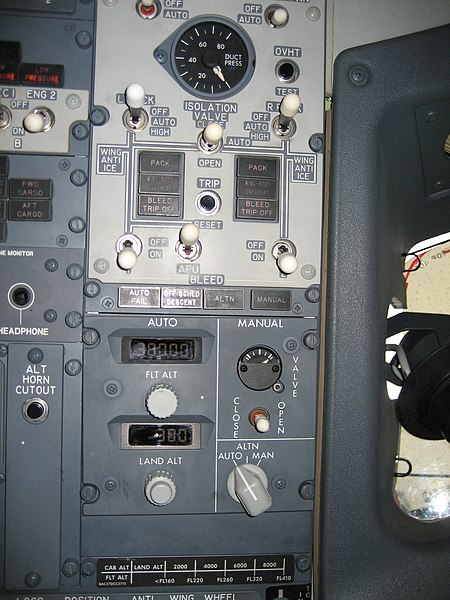Uncontrolled decompression
An uncontrolled decompression is an undesired drop in the pressure of a sealed system, such as a pressurised aircraft cabin or hyperbaric chamber, that typically results from human error, structural failure, or impact, causing the pressurised vessel to vent into its surroundings or fail to pressurize at all.
NASA astronaut candidates being monitored for signs of hypoxia during training in an altitude chamber
Cabin pressurization is a process in which conditioned air is pumped into the cabin of an aircraft or spacecraft in order to create a safe and comfortable environment for humans flying at high altitudes. For aircraft, this air is usually bled off from the gas turbine engines at the compressor stage, and for spacecraft, it is carried in high-pressure, often cryogenic, tanks. The air is cooled, humidified, and mixed with recirculated air by one or more environmental control systems before it is distributed to the cabin.
An airliner fuselage, such as this Boeing 737, forms an almost cylindrical pressure vessel
The pressurization controls on a Boeing 737-800
An empty bottle, sealed at 11,000 m (37,000 ft), is crushed on descent to sea level, compared with one in its original state.
Outflow and pressure relief valve on a Boeing 737-800





